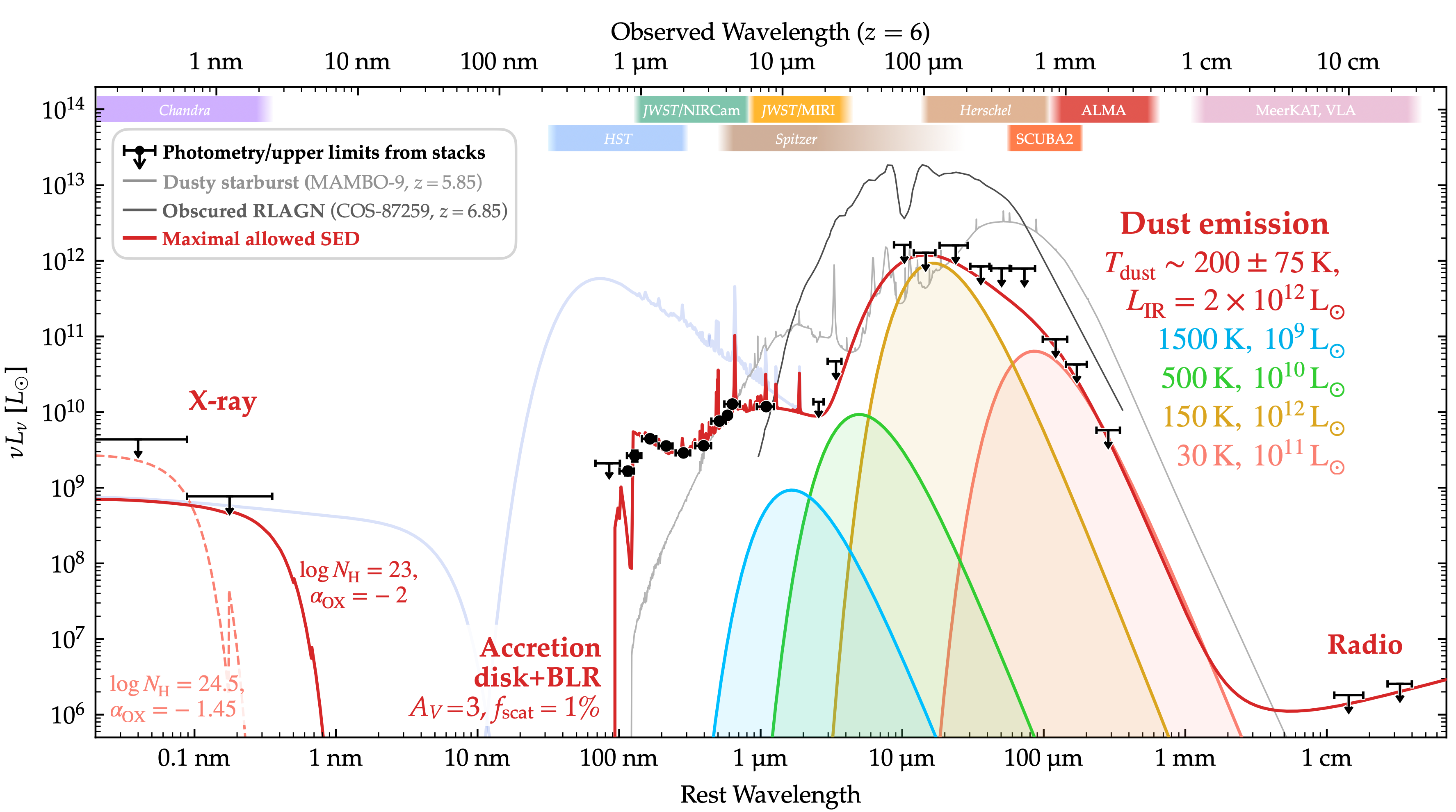Little red dots
“Little Red Dots” (LRDs) are a recently discovered population of faint, red, compact sources with broad emission lines identified in deep JWST imaging and spectroscopy. First identified in NIRCam grism data, these objects appear to be low-mass active galactic nuclei (AGN) at high redshifts (\(z \sim 4\)-\(9\)), providing new insights into black hole growth and evolution in the early universe. Their abundance may challenge previous models of black hole seeding and growth, suggesting more efficient accretion mechanisms in the early universe.
History
The term “Little red dot” was coined by Matthee et al. (2024) alongside their identification of numerous broad-line AGN in NIRCam grism data from the FRESCO and EIGER surveys. Arguably, however, the LRDs were known previously, reported by Labbé et al. (2023) as “double break” galaxies from early imaging from the CEERS survey. Similar to Lyman break galaxies, these were identified with a color-color selection to capture objects with strong Lyman breaks and Balmer breaks.
Key observational characteristics include: - Extremely compact morphology, often indistinguishable from a point source - Red colors in the rest-frame optical (typically \(F277W - F444W > 1\)) - Broad H\(\alpha\) and/or H\(\beta\) emission lines with typical FWHM of 1000-2500 km/s
Examples
Kokorev et al. (2023) report the spectroscopic identification of an LRD at \(z=8.50\) from the UNCOVER survey.
Selection
Selection of LRDs is some
Not all BLAGN are LRDs, and not all LRDs are BLAGN, but it is not yet established how well the two populations overlap.
Spectral energy distribution
The LRD SED has been the subject of a lot of work. It is characterized by a composite SED shape that is blue in the rest-frame UV (e.g., with UV slope \(\beta \lesssim -1\)) but red in the rest-frame optical (\(\beta_{\rm opt} \gtrsim 0\)). Setton et al. (2024) stacked RUBIES spectra and found that this turnover typically occurs at the Balmer limit.

The LRDs lack many AGN signatures typically observed at lower-redshift and in more normal AGN, such as X-ray emission and mid-infrared emission from the dust torus.

Demographics
Recent studies have measured the number density of LRDs to be approximately \(n \sim 10^{-5}\) Mpc\(^{-3}\) at \(z \sim 4\)-\(6\), higher than expected based on extrapolations from luminous quasar populations (Greene et al. 2024; Akins et al. 2024; Kokorev et al. 2024; Kocevski et al. 2024).
The LRDs don’t seem to exist in large numbers below \(z<3\) (Kocevski et al. 2024), though its unclear if this is a selection effect.
Theoretical Implications
Black Hole Seeding and Growth
The discovery of numerous low-mass AGN at high redshifts has implications for black hole formation theories:
- Supports scenarios involving super-Eddington accretion channels (Lambrides et al. 2024; Pacucci and Narayan 2024).
- May favor heavy seed formation channels (direct collapse black holes) in some cases
- Potential contribution to the ionizing photon budget, though likely subdominant to star-forming galaxies